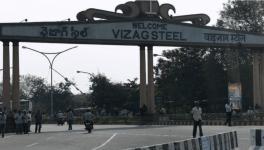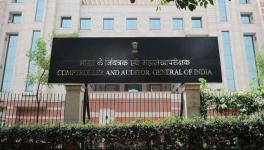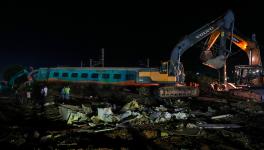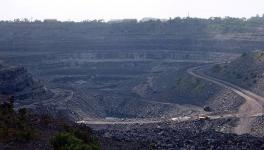Sikkim’s Power Development Corporation is Low on Energy

Image Coutesy: Hindustan Times
Election season is in full swing in Sikkim. The ruling Sikkim Democratic Front (SDF) with two and a half decades of incumbency is perceived to face a three-way battle between the Sikkim Krantikari Morcha (SKM) and the Hamro Sikkim Party (HSP). Both opposition parties have attacked the Pawan Chamling led government for corruption and financial irregularities. Both parties have also demanded that the Central Bureau of Investigation (CBI) investigate irregularities in the hydro power sector. The office of the Comptroller and Auditor General of India (CAG) has pointed out irregularities in the sector regarding the operation of the Sikkim Power Development Corporation Limited (SPDCL). The last CAG report on Sikkim was published in 2015, and would correspond to the present government’s previous term. The irregularities noted would lead one to believe it to be more along the lines of mismanagement or incompetence, however, corruption cannot entirely be ruled out.
The Hindustan Times had reported Chamling on March 6, as having said that the revenue to be earned through the power sector will amount to Rs. 2 lakh crore annually. In this regard, it would be worthwhile to look at what the CAG has to say about a state public sector undertaking (SPSU), namely, Sikkim Power Development Corporation Limited (SPDCL). The CAG report scrutinised one aspect of the SPDCL’s business which is not connected to power development despite the state’s supposedly lucrative hydro-power capacity. This aspect concerned the purchase of four bulldozers from Bharat Earth Movers Limited (BEML) ostensibly to lease them out to independent power producers and private contractors to earn some additional revenue. The four machines were bought at a total price of Rs. 2.34 crore with an estimated life span of six years. The company expected to earn Rs. 5.36 lakh per month from leasing them out. This would have resulted in an earning of Rs. 3.86 crore by the end of the machines’ projected life span.
Also Read | Are Political Alignments in Northeast Related to Funds From the Union Government?
The company made an initial down payment of Rs. 0.47 crore to BEML. Between July 2008 and September 2009, the company made payments to the tune of Rs. 1.37 crore, mostly from the revenue earned by leasing out the machines. As of May 2014, the balance amount of Rs. 0.5 crore was unpaid.
While this may not look great on paper, the story uncovered by the CAG gets worse. It transpired that the SPDCL did not conduct any market research. The demand for bulldozers was limited and in 2011, the company reduced the monthly rent of one bulldozer from Rs. 2 lakh to Rs. 1.5 lakh. Thus, between 2008 and 2013, the company earned only Rs. 1.28 crore. In June 2014, the company disposed of all four bulldozers for Rs. 7.3 lakh per machine. The net loss incurred by the company was Rs. 0.77 crore.
Also Read | Fiscal Indicators of North-East States Remain Below the Indian Average
In its previous report, for the financial year 2012 to 2013, the CAG noted that SPDCL had failed to recover Rs. 1.28 crore which resulted in a loss of interest to the tune of Rs. 51 lakh. This arose in respect to a contract awarded in 2004 to M/S Yuksom Engineering Works Pvt. Ltd. (Yuksom) for fabricating and erecting pipes at the Rellichu Hydro Electric Power Project (HEP). The cost of the work was Rs. 9.58 crore and was expected to be completed within two years, by September 2006. In 2005, the SPDCL took over the construction of the Rellichu HEP. In February 2006, SPDCL release Rs. 2.30 crore to Yuksom to supply materials against a bank guarantee drawn on the State Bank of Sikkim (SBS) for Rs. 2.35 crore. The guarantee was valid for one year and was renewed in February, 2007 for another year after which Yuksom did not renew it further.
The CAG report found that Yuksom had in fact not completed the work even after three years since the work order was issued. SPDCL invoked the bank guarantee three days before its expiry and requested the SBS to deposit the amount released against the bank guarantee in a fixed deposit for one year. However, the SBS only released Rs. 75 lakh which were invested in a fixed deposit. SPDCL completely failed in recovering the amount from the bank guarantee. In August 2009, due to huge financial burdens borne by the company, the development of Rellichu HEP was abandoned. In March 2011, a sum of Rs. 27 lakh was adjusted towards the contractor’s pending bills.
In its 2015 report, the CAG noted that it was only in the financial year of 2010 to 2011 that the working SPSUs in Sikkim (Eight working companies out of 15 SPSUs) made a profit of 0.99 crores. The largest loss as per the report was in 2013-2014 of Rs. 12.99 crore. As on September 30, 2014, five SPSUs had incurred an aggregate loss of Rs. 16.68 crore. SPDCL was one of the loss-making entities where it was number two at Rs. 6.05 crore. The number one spot was occupied by the State Bank of Sikkim at Rs. 7.05 crore. Considering that the SPSUs are making losses, and that as per the CAG reports, it appears to be a case of either mismanagement or incompetence. Chamling’s proclamation in this regard would appear to be more of building castles in the air.
Also Read | Can a Former Convict Contest an Election?
Get the latest reports & analysis with people's perspective on Protests, movements & deep analytical videos, discussions of the current affairs in your Telegram app. Subscribe to NewsClick's Telegram channel & get Real-Time updates on stories, as they get published on our website.
























